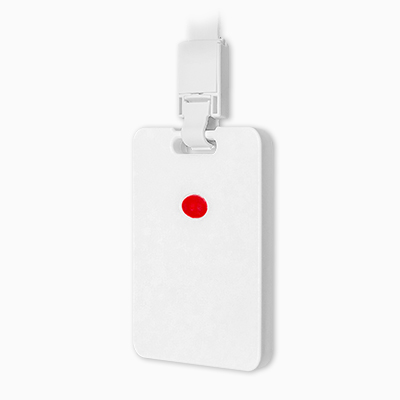Ultra wideband wireless communication technology (UWB) is a unique carrier free communication technology that does not rely on traditional carriers, but utilizes short energy pulse sequences and extends the pulses to a frequency range through orthogonal frequency division modulation or direct sorting. UWB has many significant characteristics, such as high transmission rate, large spatial capacity, low cost, and low power consumption.

The ultra wideband indoor positioning system consists of a UWB receiver, UWB reference tags, and active UWB tags. During the positioning process, the UWB receiver receives the UWB signal emitted by the tag, filters various noise interferences during electromagnetic wave transmission, extracts signals containing effective information, and then performs distance measurement and positioning calculation analysis by the central processing unit.
The development trend of future wireless positioning technology is to combine indoor positioning with outdoor positioning to achieve seamless and accurate positioning. The existing network technology still has shortcomings in this regard, and UWB technology has emerged among many wireless positioning technologies due to its low power consumption, good anti multipath effect, high security, low system complexity, and extremely high positioning accuracy.
UWB, as an emerging wireless communication technology with high speed, low cost, and low power consumption, generates pulse signals with a bandwidth greater than 500MHz or a ratio of baseband bandwidth to carrier frequency greater than 0.2. The FCC stipulates that the frequency band of UWB is from 3.1GHz to 10.6GHz, and limits the transmission power of signals to below -41dBm.
This makes UWB mainly focused on two applications: one is short-range high-speed data communication that complies with the IEEE802.15.3a standard, which can wirelessly propagate large amounts of multimedia data without delay, with speeds up to 100Mbit/s-500Mbit/s; The second is low-speed low-power transmission that complies with IEEE802.15.4a, which can be used for indoor precise positioning, such as location detection of construction workers, detection of hazardous sources in chemical plants, prediction of dangerous behaviors of prison inmates, and robot motion tracking.
The characteristics of UWB signals endow it with advantages such as low cost, resistance to multipath interference, and strong penetration ability in positioning. It can be applied to the positioning and tracking of stationary or moving objects and people, providing very accurate positioning accuracy.
Copyrights© Shenzhen Skylab Co.,LTD All Rights Reserved.

